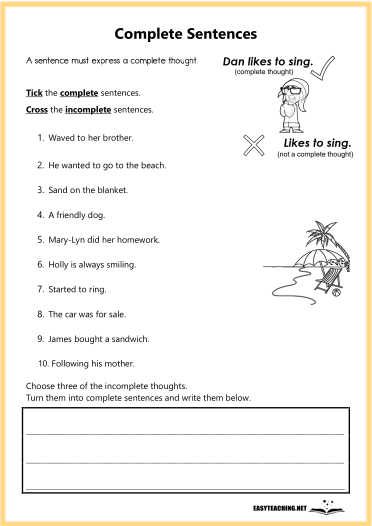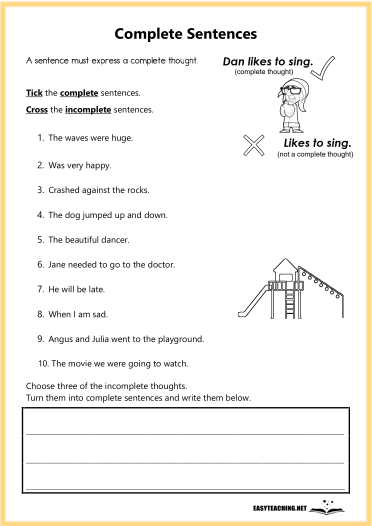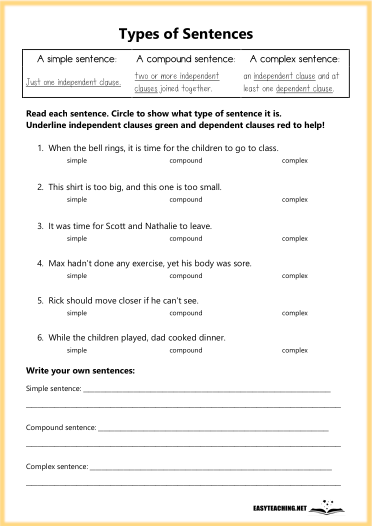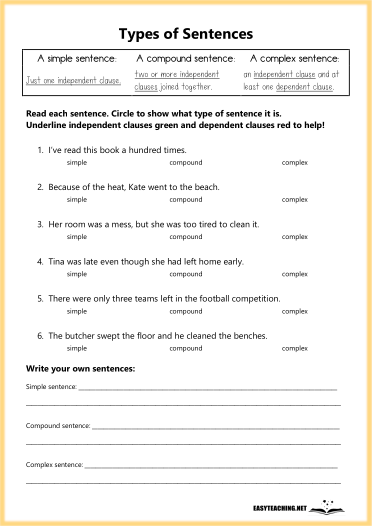TOPICS

TOPICS
English /Grammar & Language /Sentence Types & Structures /Simple, Compound & Complex
Browse our collection of sentence structure worksheets and activities aimed at helping learners understand the difference between simple, compound and complex sentences. These resources also help teach how to form and use the different structures effectively. Watch our Simple, Compound, Complex video.
Use the filter above to narrow the results by resource type and/or grade level.
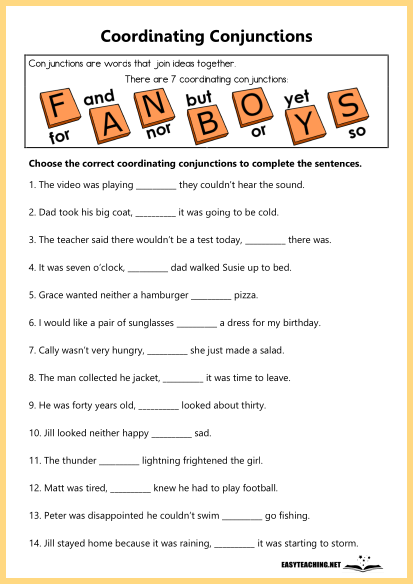
Coordinating Conjunctions (2)
This worksheet helps introduce coordinating conjunctions. Fill in the missing coordinating conjunctions to complete the sentences.
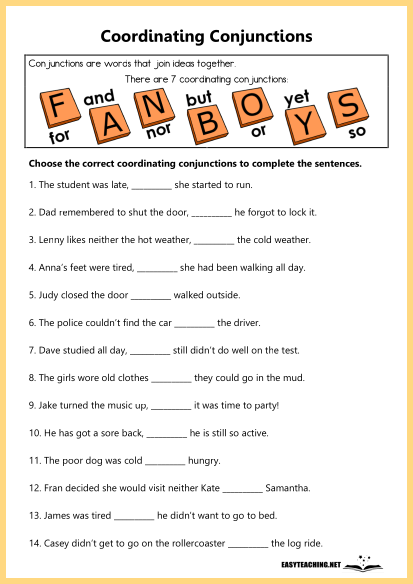
Coordinating Conjunctions (1)
This worksheet helps introduce coordinating conjunctions. Fill in the missing coordinating conjunctions to complete the sentences.
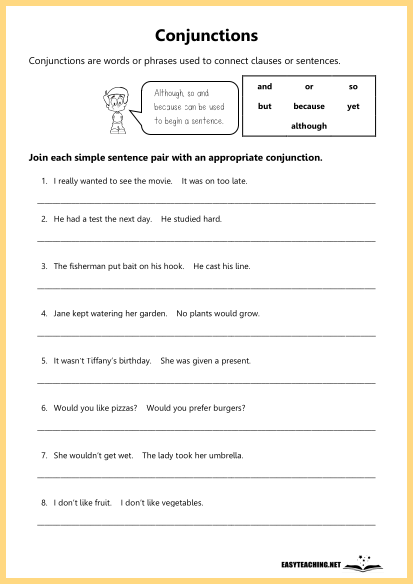
Conjunctions: Joining Simple Sentences
Join each simple sentence pair with an appropriate conjunction.
Related Material

Varying Sentence Length: Use Long Sentences
Short sentences have been overused. Rewrite, using long sentences to help express a slower, more relaxed feeling.

Writing Dependent Clauses: Complex Sentences (3)
Create complex sentences by adding a dependent clause to each independent clause.

Using Conjunctions Card Set
Use conjunctions to turn simple sentences into compound sentences. Laminate for a longer lasting resource.







